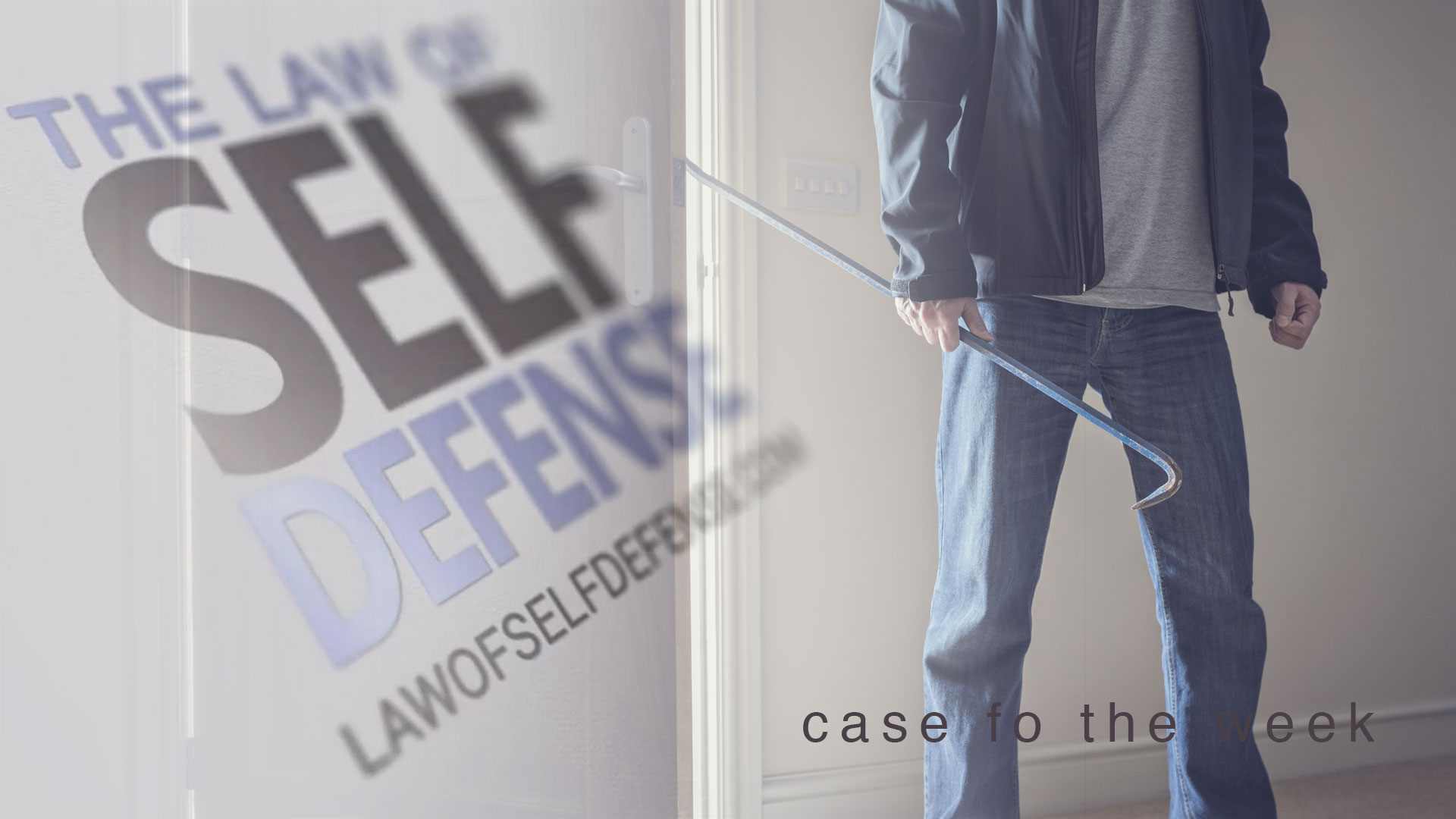
Posted on June 20, 2018
Case Of The Week with Andrew Branca- Home Invasion
Law of Self Defense Case of the Week: June 20th, 2018:
Aaron Neames was the homeowner defendant in this case, and he was away from his home when the invasion took place. The home invader and the victim in this case was one Benjamin Jarreau, and he entered the Defendant’s home armed with a rifle and the intent to rob the Defendant.
Although the Defendant was not home, three other people were at the premises, and the home invader fired his rifle into the sofa on which they were sitting in order to compel their compliance with the robbery. The home invader took their cell phones and was rummaging through the house for valuables when the Defendant returned home.
Confronting the Defendant, the home invader fired a rifle round into the floor at the Defendant’s feet, again in order to compel compliance, but things quickly went sideways for the home invader. The Defendant and others in the home managed to disarm the home invader of his rifle, produced a pistol on their own, forced the home invader to his knees and began pistol-whipping him about the head.
Somehow the home invader manages to escape from the Defendant’s home, and runs outside and gets into his car.
Right up to this point we have a pretty big self-defense and defense of others win, having neutralized a long-gun armed home invader and expelled him from his premises all without anyone getting shot or killed, although granted the pistol whipping likely goes a bit too far. Unfortunately, then things go sideways for the Defendant, solely as a result of poor decision-making on the Defendant’s part.
Rather than simply allow the home invader to drive away, and call the police to report the home invasion, the Defendant followed the home invader outside to his car, and fired six rounds into the vehicle, striking the now fleeing home invader in the elbow and arm.
The Defendant was charged with attempted second-degree murder, and brought to trial. (The home invader was also charged, with home invasion, false imprisonment, and armed robbery, but took a three-year plea deal. He would testify against the Defendant at trial.)
Ultimately the jury found the Defendant guilty of second-degree manslaughter, and a few days ago he was sentenced to three years in prison.
So, a few take home lessons from this case.
First, perhaps not surprisingly the Defendant was targeted by the home invader because the Defendant was apparently a drug dealer from whom the home invader had made previous purchases—just a couple of months prior to his trial the Defendant was reportedly arrested with a pound of marijuana, which I’m told is quite a bit of weed. Drug dealers are pretty attractive robbery targets because they tend to have lots of drugs and cash on hand, and tend not to want to report a theft of their drugs to the police. So, first thing, don’t be a drug dealer.
Second, much of the media coverage of this case carried headlines asserting that this case “tested the limits of Louisiana’s stand your ground laws.” If you’re pursuing somebody after they no longer represent a threat, “stand-your-ground” is entirely irrelevant. Stand your ground does not equal pursuit of a neutralized threat.
Third, the law of self-defense allows the use of defensive force against an imminent threat, meaning a threat that’s actually taking place or immediately about to take place, and you can continue to use force so long as the threat continues to be present or imminent. Once the threat has been neutralized, however, either by your use of defensive force or simply because the threat is fleeing, your privilege to use force has ended. Indeed, once the former attacker is in flight he’s arguably regained his innocence for use-of-force purposes moving forward, and the pursuer has now become the aggressor in a second confrontation. That means that other person can now justify their use of force in resistance to you as self-defense, whereas you cannot justify their use of force against them.
Fourth, the Defendant was found guilty by a 10-2 jury vote. In 48 states, you can be found guilty of a felony only if the jury unanimously agrees that the prosecution has proven each and every element of the criminal charge beyond a reasonable doubt. If your defense lawyer can raise a reasonable doubt in even ONE juror’s mind, you end up with a hung jury and a mistrial. You can always be tried again by the prosecutor after a mistrial, but at least you haven’t been convicted yet. In Louisiana, where this trial took place, however, and also in Oregon, felony convictions can be achieved by a supermajority vote of 10 out of 12—which means the prosecution can afford to have as many as two jurors have a reasonable doubt of guilt beyond a reasonable doubt and still obtain a conviction. That obviously makes things much easier for the prosecution and much more challenging for the defense.
Finally, if you’d like to read more about this case and the underlying events, which took place in Walker Louisiana, simply point your browser to http://www.lawofselfdefense.com/walker.